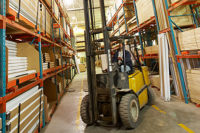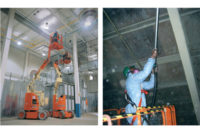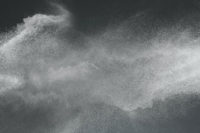What’s missing from your combustible dust plan?

This doesn’t have to continue at this pace. I believe we can do a better job.
| TO DO LIST FOR COMBUSIBLE DUST |
What’s missing from your plan? What don’t you know that can hurt you?
My goal is to fill some of the knowledge gap. I’ve framed it in a system that helps you see the full scope of things that should be on your “To Do” list for combustible dust. Due to the limitations of space in the article, I can be neither definitive nor detailed for all industries. Instead I seek to be directional, outlining 7 steps to help you see what categories of activities need to take place. You will have to fill in the specifics for your plant.
Step 1: First things first
Safety starts by acknowledging that you have combustible dust. But I don’t think a company has to test their dust to determine the combustible characteristics of their dust if it is obvious, like wood dust, flour dust, aluminum dust, etc. It doesn’t matter what the Kst, Pmax, MEC, MIE, MIT, etc. is; whatever the industry, you know you have to keep the dust from accumulating.
I have found that most people test the composition of their dust after they have been fined by OSHA. But they wouldn’t have had to do it if they had prevented the dust from accumulating in the first place.
Whatever the composition of the dust, it must be eliminated because all fugitive dust can accumulate into a combustible cloud. The diagram above shows the factors that can precipitate an explosion.
Step 2: Get the facts
OSHA compliance is premised on adherence to standards recommended by experts, like the National Fire Protection Association (NFPA) and the Chemical Safety Board (CSB). Make sure you have a strong working knowledge of the standards for your industry.
• NFPA 654: Standard for the Prevention of Fire and Dust Explosions from the Manufacturing, Processing, and Handling of Combustible Particulate Solids (This is the umbrella standard used across a variety of industries)
• NFPA 664: Standard for the Prevention of Fires and Explosions in Wood Processing and Woodworking Facilities
• NFPA 61: Standard for the Prevention of Fires and Explosions in Agricultural and Food Processing Facilities
• NFPA 484: Standard for Combustible Metals
• NFPA 655: Standard for Prevention of Sulfur Fires and Explosions
NFPA also issues NFPA 70: National Electrical Code®, with useful information. Visit www.nfpa.org for a copy of the standard(s) that best fits your business.
Also, be sure to take note of Specific OSHA violations cited under their General Industry General Duty Clause found in:
• 29 CFR 1910.22 — General Requirements: Housekeeping
• 29 CFR 1910.38 — Emergency Action Plans
• 29 CFR 1910.94 — Ventilation
• 29 CFR 1910.197 — Spray Finishing Using Flammable and Combustible Materials
These are all safety standards related to different facets of dealing with combustible dust, and must be considered as part of your Risk Assessment Checklist and/or Combustible Dust Safety Checklist. Editors’ note: OSHA does not have a specific combustible dust standard, but a new rule for combustible dust is on the agency’s standard-setting agenda.
Step 3: Develop a risk assessment checklist
Unfortunately, many companies miss this step, and don’t initiate this kind of document. It is critical to do this analysis — or hire a third party to do it for you. Risk assessments vary by type of product processed and type of building structure.
The assessment should include specific tolerances for:
• Factors for ignition sensitivity
• Projections for severity of possible explosions
• Temperature stability of environment
Step 4: Create a Standard Operating Procedure (SOP)
Any business that generates combustible dust should have an SOP for controlling it. Here again, elements of the checklist will vary depending on the type of dust generated.
But here are some areas people overlook that should be part of your checklist:
• Do not assume that an OSHA-approved tip for compressed air means that it is safe for removal of combustible dust at any pressure. The 15 PSI limit is set to prevent a combustible dust cloud.
• If you have central filtration systems, make sure your safety sensors are all working. Extinguishing systems, abort gates and diverters also need to be checked regularly. The interval of inspection varies by manufacturer, so check with your manufacturer to get their recommendation.
• If you are cleaning an area to remove accumulated dust, turn off all the power. Don’t assume that because it is off at the breaker that the entire system is off.
• It is essential to maintain the filter material in your filtration system. The slightest tear in the filter decreases the integrity of the media. This then allows the fugitive dust to circulate through again. Even small openings can keep you out of compliance.
• There are engineered solutions available that prevent dust from accumulating. These are in sharp contrast to managed solutions, where you are cleaning up after the dust already exists. Make sure you know your options to proactively deal with the problem.
John Allen, president of J. Allen Resources, works with timber and wood processors to help them prevent combustible dust explosions. He says, “Most companies are still dealing with dust after the danger has been created. They see cleanup as a cost of doing business, tolerating a wide range of dust accumulation. Now there are engineered alternatives to this roller coaster scenario. People are just not aware of them.”
Step 5: Provide training sessions
You have to train your people. That’s when the checklists come to life. This is a systemic — and systematic — undertaking that needs to take place. Your employees need to know the realities of what to look for and what can be done — and that they can be killed by an explosion if they don’t pay attention to their work in this area. Keep the training practical.
You don’t have to reinvent the wheel to make this happen. Yes, you can hire third parties to help train for your particular needs. But in late September of this year, NFPA launched online training courses on the general standards in NFPA 654 to provide the groundwork.
There are three modules in the series:
1. Hazard Identification
2. Hazard Evaluation
3. Hazard Control
Guy Colonna, division manager, Industrial and Chemical Engineering for NFPA, was the primary force behind these courses. He explains, “If you are managing a facility where this standard applies, it is essential that you understand the elements…and that your workers are aware as well.”
Step 6: Don’t overlook special Class II conditions
Class II locations relate to combustible dust. NFPA 499: Recommended Practice for the Classification of Combustible Dusts and of Hazardous (Classified) Locations for Electrical Installations in Chemical Process Areas provides two divisions within Class II.
In NFPA 499, Class II Division 2 is defined as a combustible atmosphere existing during abnormal conditions of dust accumulations <1/8 inch but obscure the surface color. It doesn’t take much to create Class II Div 2 condition according to this standard.
But you can prevent a Class II Hazardous location from developing. Excellent housekeeping with an engineered solution can actually unclassify an area. The cost of preventing the condition is a fraction of the cost of taking care of it after the fact.
Step 7: Review steps 1-6 every year
Complacency with the status quo is the biggest enemy of controlling combustible dust. You can’t afford that. You have to work hard to build a culture in your company that sees the seriousness of this threat.
I suggest revisiting these steps annually, at least. Give your employees the authority to act. Make this task part of their annual performance review. Then reward those who complete the tasks responsibly by commending them across the company.
I know that the new OSHA regulations are still in congressional committee under review, as of the time this article was written. But we shouldn’t do the right thing to prevent a fine. We should do the right thing to prevent an explosion or a fire. We know the steps, so let’s get started.
Looking for a reprint of this article?
From high-res PDFs to custom plaques, order your copy today!





